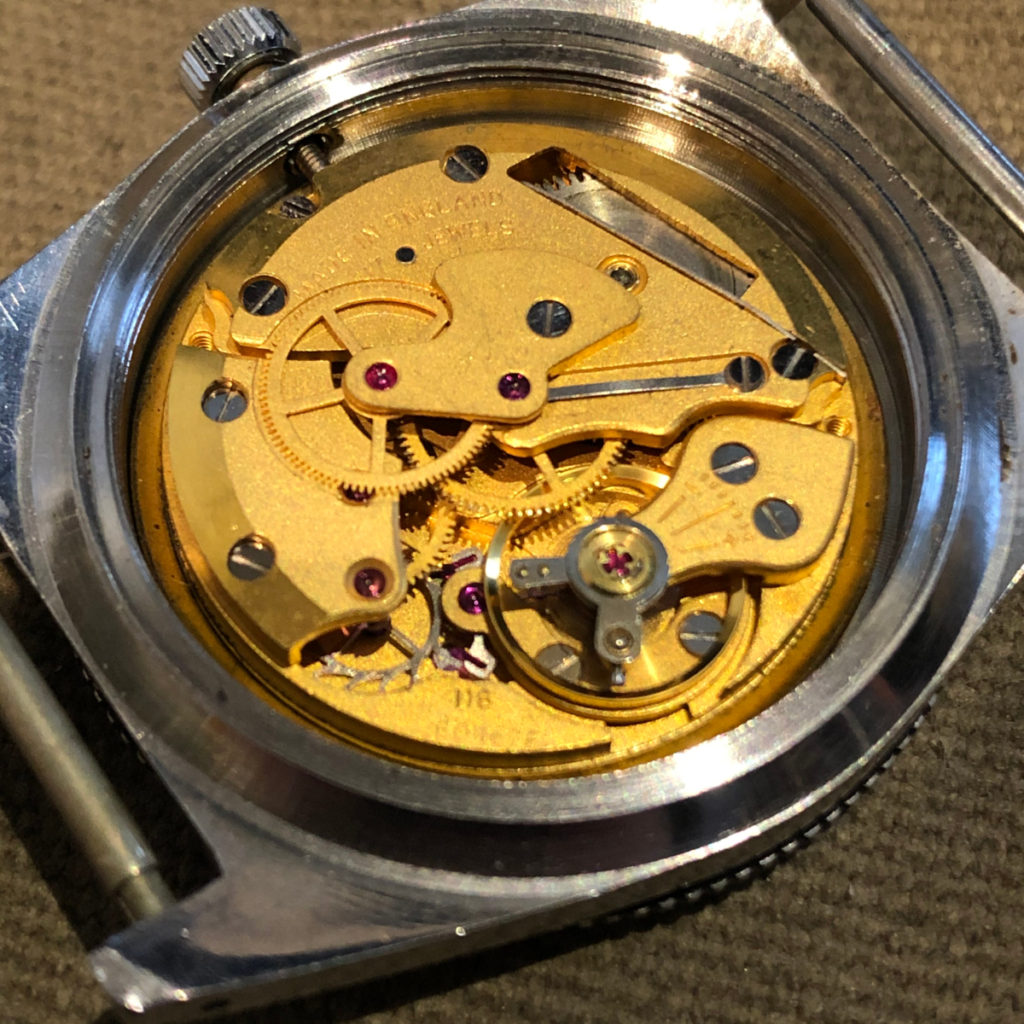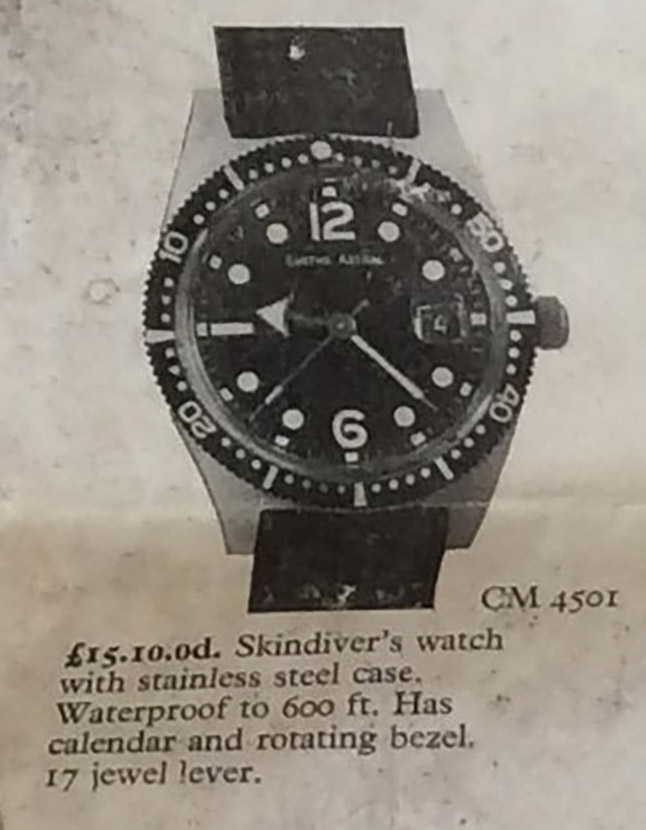This Smiths Astral Diver dates from 1966. It has a frosted, gilt finished, 60467E 17-jewel movement with a double-roller lever escapement, a steel escape and a monometallic balance with a beryllium balance-spring. The stainless steel case is marked 20 Atmos, but the non-screw down crown makes the claim of 200m water resistance questionable.
Samuel Smith established S.Smith & Son in 1851. In 1873, his son, Samuel Smith Jr opened a shop on London’s Strand, selling English and Swiss pocket watches. In 1934 Smiths began making their clocks, but making watches was far more difficult. In 1939, with WW2 imminent, Smith’s factory moved from London to a new site near Cheltenham and within 3 years, they were able to supply the military with a pocket watch and a chronograph which was designed and put into production in just 12 months.
During WW2 Smiths developed the 12.15 movement, refined in 1954 to become the 27CS (CS = centre seconds, an Air Ministry requirement). This was further developed with a hacking function to meet Defence Specification DEF-3-B (Sept 1966) Wrist Watch, General Service, NATO designation W10. Smiths won the contract to supply the British Armed Forces with the W10 and deliveries began in 1967.
The 60467E movement in my watch is a further development, now with added calendar. There is some speculation that the watch was an attempt to win the Royal Navy Divers watch contract (replacing the MilSub), however this is conjecture and I can’t find evidence for this. Sadly, the CM4501 represents the death throes of Smiths as the powerhouse of 20th Century English watchmaking, it is a ‘contract watch’ with the case and dial bought overseas and a Smiths movement fitted.

By the mid 60s Smiths were struggling financially and to meet the growing trend for divers’ watches, Smiths bought in a suitable case. Whilst similarities in case design with the Seiko 62MAS case have been noted (it’s been suggested that these were 62MAS cases sold to Smiths), these cases were French and identical cases from T.K. Co are found in skindivers from many other brands (including Stowa). This explains the very deep caseback for a manual, the majority of other watches using this case contained automatics. There are stories Smiths had lost the right to produce their automatic movement after a copyright infringement court case with IWC, so a manual movement was used in these watches, but a more likely explanation is that Smiths had one eye on the navy contract, which specified a hand winding movement, and they could make these 27CS-based movements in quantity.
The Smiths Astral CM4501 appears in a 1968 catalogue alongside the civilian version of the W10, the GS4701. The W10 contract was not enough to keep Smiths’ watchmaking business financially secure, and with the introduction of quartz watches in September 1970 it was announced that the Cheltenham factory would close; fine watchmaking ended in May 1971 and the W10 contract passed to Hamilton. This leaves the Smiths Astral Skin Diver as an oddity, it has been called the English Rolex, but the case and dial were produced in France. Undoubtedly it was an attempt by Smiths to meet the new fashion for divers watches, and maybe to win the Royal Navy contract. It was not only their first divers watch, but one of the last designs they produced with a Cheltenham movement.
It has been called a ‘Marmite’ (or ‘Vegemite’) watch provoking either love or hatred from Smiths collectors. I’m in the former camp, it’s a great example of 1960s Skin Diver fashion, English made (assembled?) and a piece of watchmaking history. My example dates from November 1966 with a non-hacking 60467E, a countdown bezel and it’s on a grey 20mm NATO. The crown is no longer original, having been replaced by a watchmaker whilst repairing the date mechanism… I never went back there!



Leave a Reply
You must be logged in to post a comment.